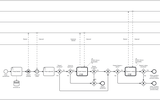Analyst
CPK – Central Signing Component
The Central Signing Component (CPK) is a cornerstone of Slovakia’s eGovernment infrastructure. It provides trusted digital signing and verification services to ensure that electronic documents are legally valid, secure, and interoperable. This article explores the supported authorization methods, technical capabilities of CPK, and its critical role in the digital public sector.
IAM and eIDAS – Secure Electronic Identity
The Identity and Access Management (IAM) module and the eIDAS Node are foundational components of electronic identity in Slovakia’s eGovernment. They ensure secure and unified access to digital public services for citizens, businesses, and cross-border users. This article explores their architecture, core functions, and practical application in public administration.
CEP and eDesk – Communication Between Citizens and the State
The Central Electronic Filing System (CEP) and the eDesk (Electronic Mailbox) are key components of Slovakia’s eGovernment infrastructure, enabling secure and legally valid digital communication between citizens and public institutions. This article explains their functions, technical design, and practical role in the delivery and reception of official documents.
Orchestration in Camunda

Process orchestration in Camunda enables complex scenarios involving multiple institutions and steps to run as a single, seamless flow. This article explains in simple terms how Camunda coordinates tasks between public authorities like the Labour Office and the Social Insurance Agency when processing citizen applications.
BPMN Methodology – Part 5
Practical Rules and Best Practices to Ensure Model Consistency and Clarity
BPMN Methodology. Part 4
Modeling public service processes using BPMN requires a clear, systematic approach. This article outlines the key steps from identifying participants to validating and documenting the process, with a focus on the specific needs of public administration and citizen interaction.
BPMN Methodology. Part 3
Key phases of BPMN-based process modeling. From analysis and design to validation, implementation, and continuous improvement. Each phase ensures the process model is accurate, efficient, and ready for public sector digital services.
BPMN Methodology. Part 2.
This part of the methodology introduces the core components of BPMN and explains which type of diagram to use in different scenarios.
BPMN Methodology. Part 1.
This article explains what BPMN is, why it matters for process modeling, and the key benefits it brings when used in public administration.
Process Modeling Using BPMN: Introduction
This is the introductory article in a series about process modeling using BPMN. You'll learn why I decided to write these articles and who they are intended for.
5 Whys Method
The 5 Whys is a practical technique for identifying the root causes of problems. This article explains how it works, when to apply it, and highlights its strengths and limitations through a real-world example.
Analytical Thinking
Analytical thinking is one of the most critical skills for any business analyst. This article explores why it's important, how it helps tackle complex problems, and what techniques analysts use to support decision-making and improve organizational processes.
Why Business Analysis Matters?
In today’s fast-changing business landscape, business analysis is essential for effective decision-making, process optimization, and risk management. This article explores why business analysis is critical for modern organizations and how it helps bridge the gap between business and technical teams to ensure successful collaboration.
Key aspects of business analysis
Business analysis is a systematic process that helps organizations identify problems, analyze needs, and design effective solutions. It uses various techniques and tools to improve processes, support decision-making, and achieve strategic goals. When done properly, business analysis enhances organizational performance and minimizes risks during change management.
The Role of a Business Analyst in an Organization
This article explores the role of a business analyst within an organization, outlining their key competencies and collaboration with other teams. We will examine what business analysis entails, its core principles, and why it is essential for effective project management and process optimization. Additionally, we will look at the fundamental skills every business analyst should master and their position within an organizational structure.
Business Analysis as a Key Factor for Project Success.
Business analysis is key to project success and process improvement in any organization. This blog series will explore the role of a business analyst, their skills, techniques, and the value they bring in solving problems and supporting decision-making.